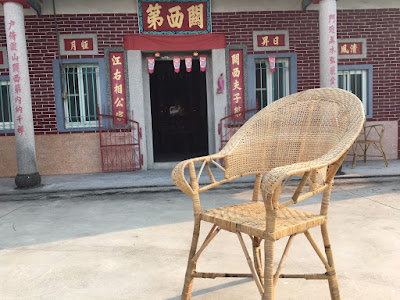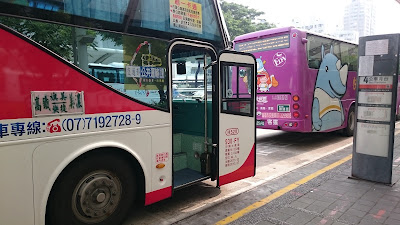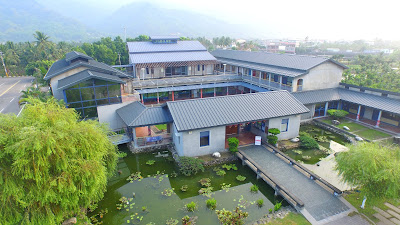Rattan Chairs, the Folkcraft in Meinong
 |
| Rattan chair in front of the ancestral hall |
Meinong, the village containing over 90% Hakka people, has still kept its traditional culture in the life of the residents. With the lower price and the rapid mass production, plastic products that overwhelmingly occupy people's life replace the traditional crafts, which takes more time and money.
As time goes by, fewer people are willing to learn the skills due to fewer demands and the skills are going to lost in the world forever. It might be the process of evolution that people choose what is most beneficial for them. However, some traditional artefacts have their unique values that cannot be substituted.
Like other areas, Meinong has the problem of traditional handicrafts and skills getting lost. Luckily, some get well preserved due to its attraction to tourists like oil paper umbrella, while some and their extinction problem are less noticed. This article is going to talk about rattan chairs, which still exist on the streets and at people's houses in Meinong, used as usual but face the risk of skill disappearance.
In the past period, there was no plastic, and the artefacts were made by the natural materials like bamboo. These kinds of materials can be acquired from the environment directly and decomposed naturally as well. Located in the south Taiwan, Meinong is always humid and hot. Therefore the ancestors of Meinong took rattan to produce chairs and other furniture.
Not like the paper umbrella that only appears in the museum and tourist shop, rattan chairs still exist on the streets and at people's houses in Meinong and are used as usual. They might appear under the tree outside of the temple, inside the office, or just in your or my living room.
Not only used in people's own house, but there were also three traditional roles rattan chairs played in past Meinong society. The first was one of the popular choices for housewarming gifts. Then, it was necessary dowry that the bride would prepare for her new family. Two big ones for her parents-in-law in the living room and two smaller ones for her and her new husband in her new room. Moreover, rattan chairs were placed inside the ancestral hall in Hakka Sanhe Yuan (三合院, Three-Section Compound). People believed their ancestor needed to sit and rest when they came back to the lobby, so rattan chairs were prepared for ancestors.
 |
| Smaller one as the dowry for the new couple |
To remind the public the vanishing artisanship, Meinong Hakka Cultural Museum has held a series of events called "The Masters of Meinong Traditional Crafts" that invite Meinong experts who have contributed themselves to the particular crafts for decades to the museum showing their skills to the visitors from 2016. There was bloom made by Phoenix Loureiro, iron basket, and bamboo curtains last year and rattan chairs are the first topics of the events this year.
The expert Huang has had the experience of making rattan chairs for more than four decades, and she is the only female chair maker in Meinong who is capable of producing the frame of the chairs and weaving the surface of the rattan chairs. Without any advertisement, her fine crafts are notable among the village and attract new customers. Regarding the challenges of endangered traditional skills for rattan chairs, Huang is willing to teach all she knows about the skills to people who are sincere to learn.
Artist: Si-Mei Huang
Place: Meinong Hakka Cultural Museum (Map)
Time: 9:30-11:30; 14:00-16:00
8, 9, 22, 23/ July
12, 13, 26, 27/ August
Ticket: NTD 40 for the museum
 |
| The venue of the live show |
 |
| The live show of rattan chair manufacture |
Photo credits: Meinong Hakka Cultural Museum




Comments
Post a Comment